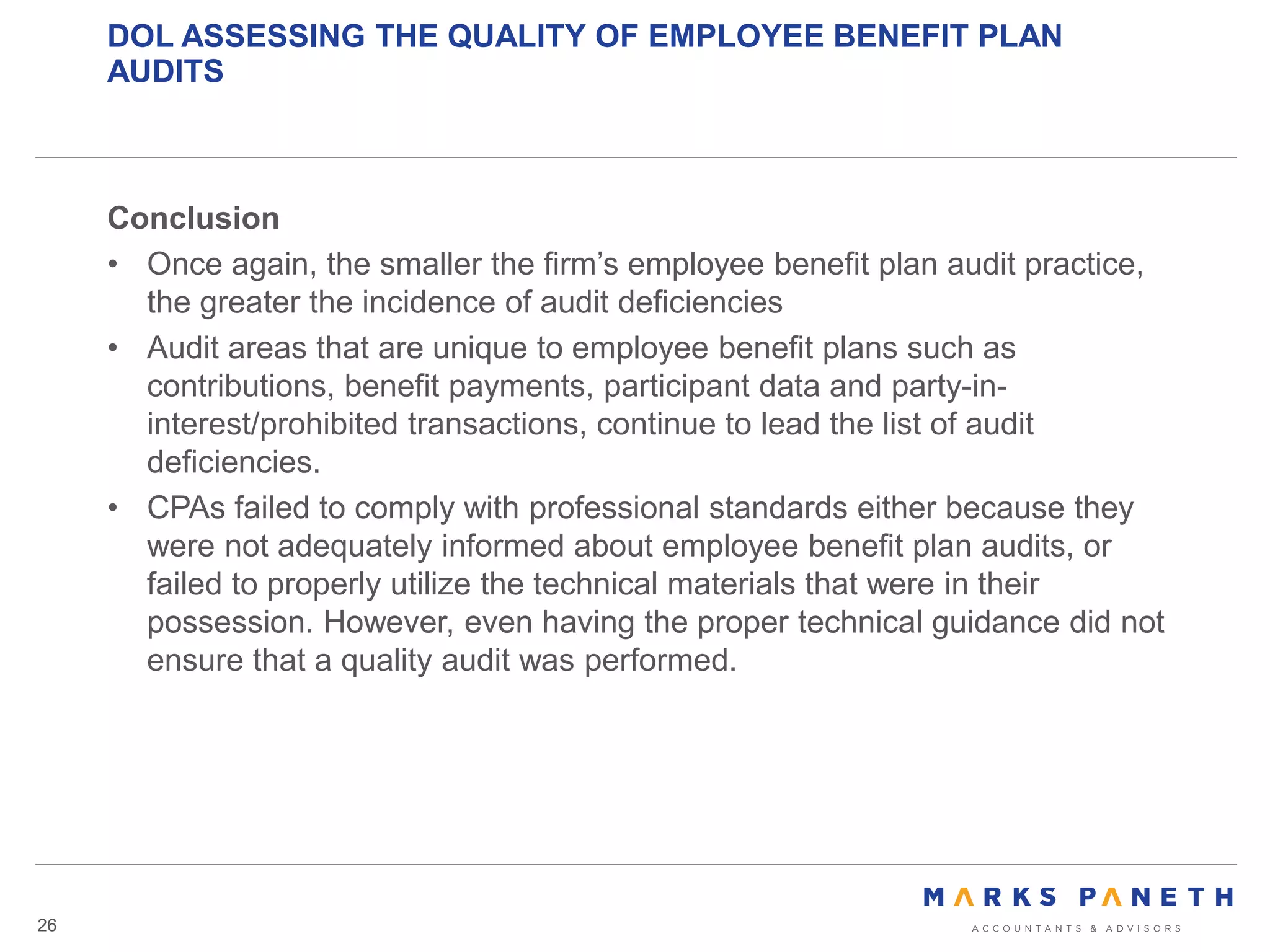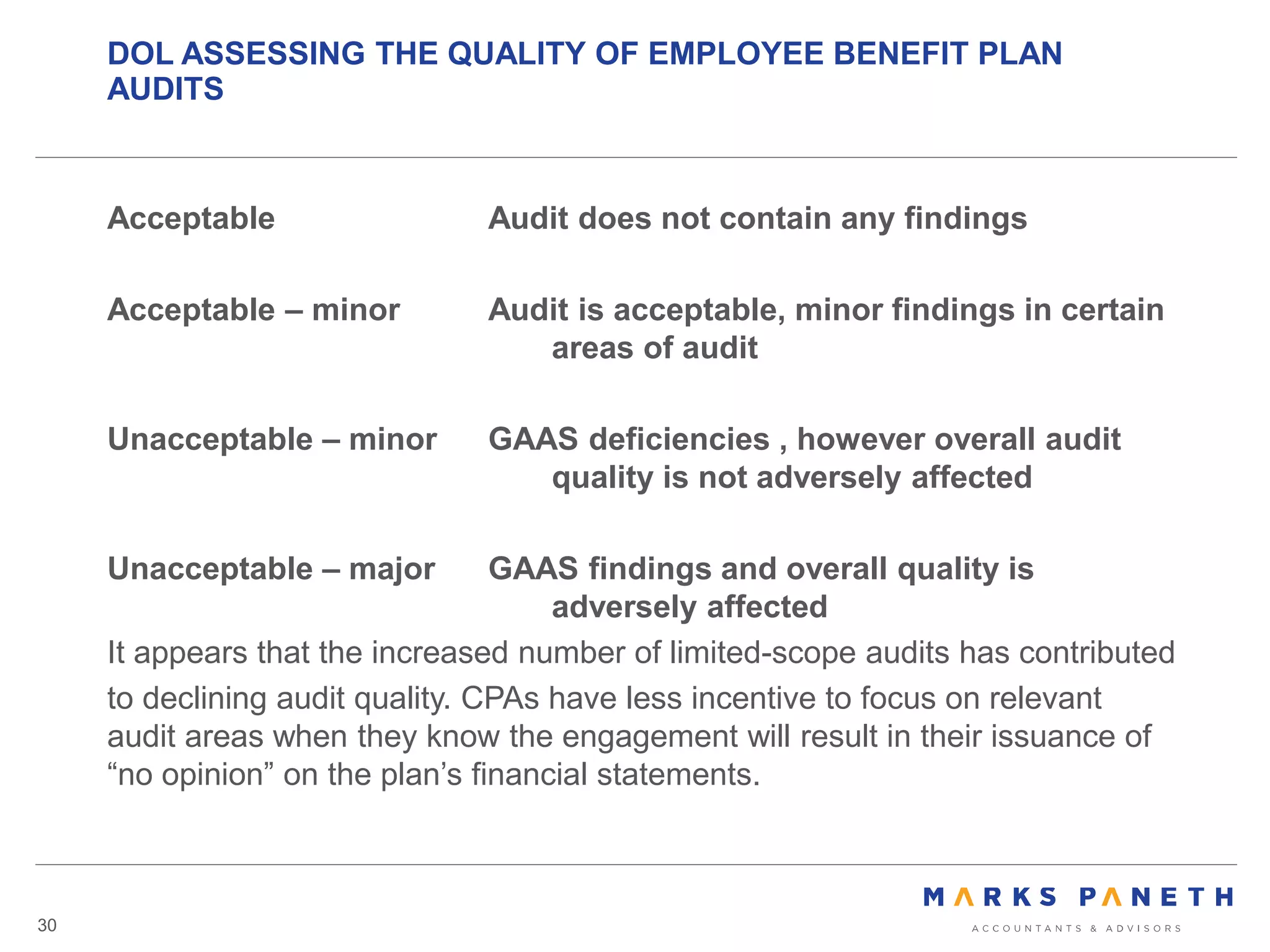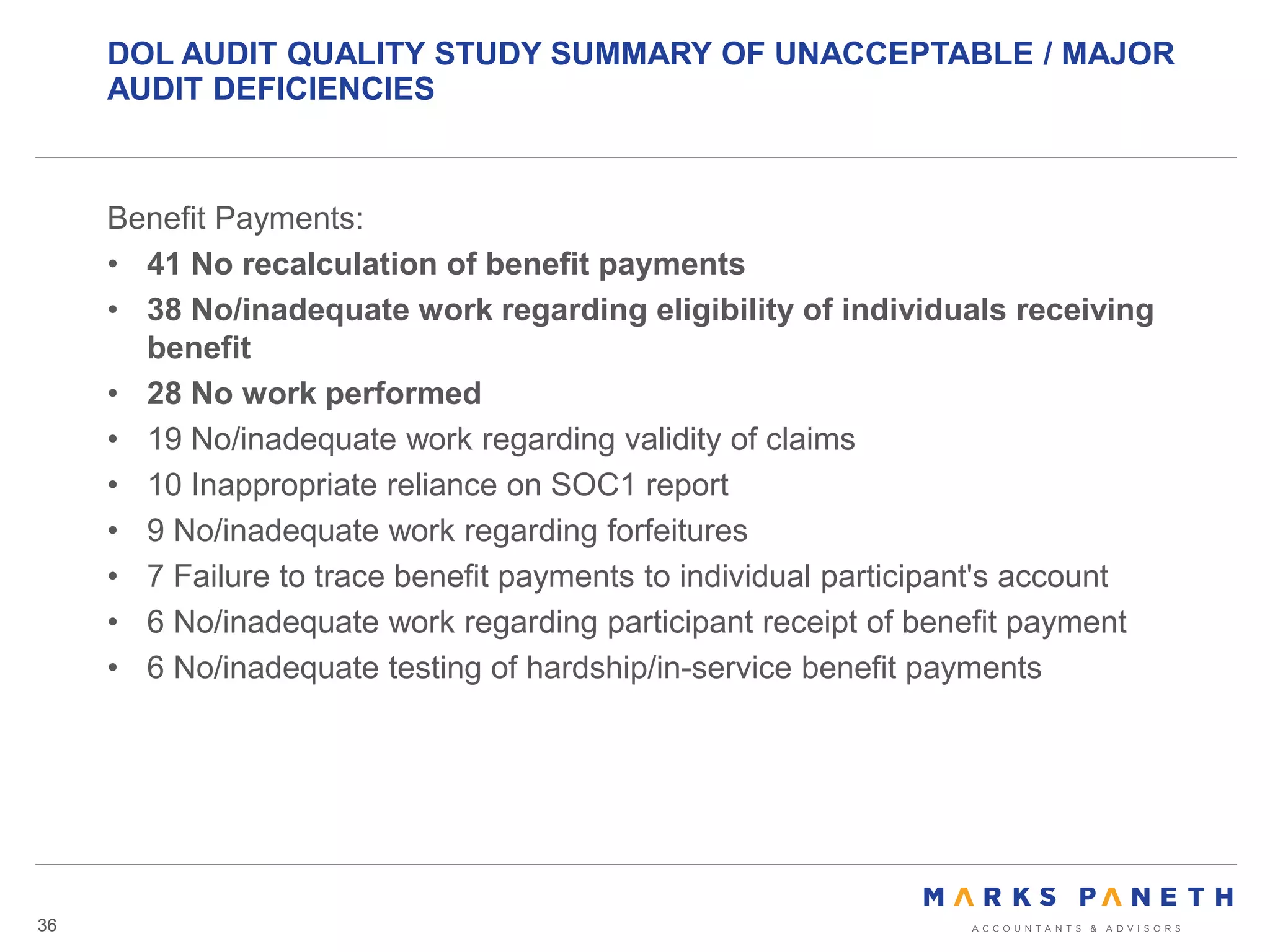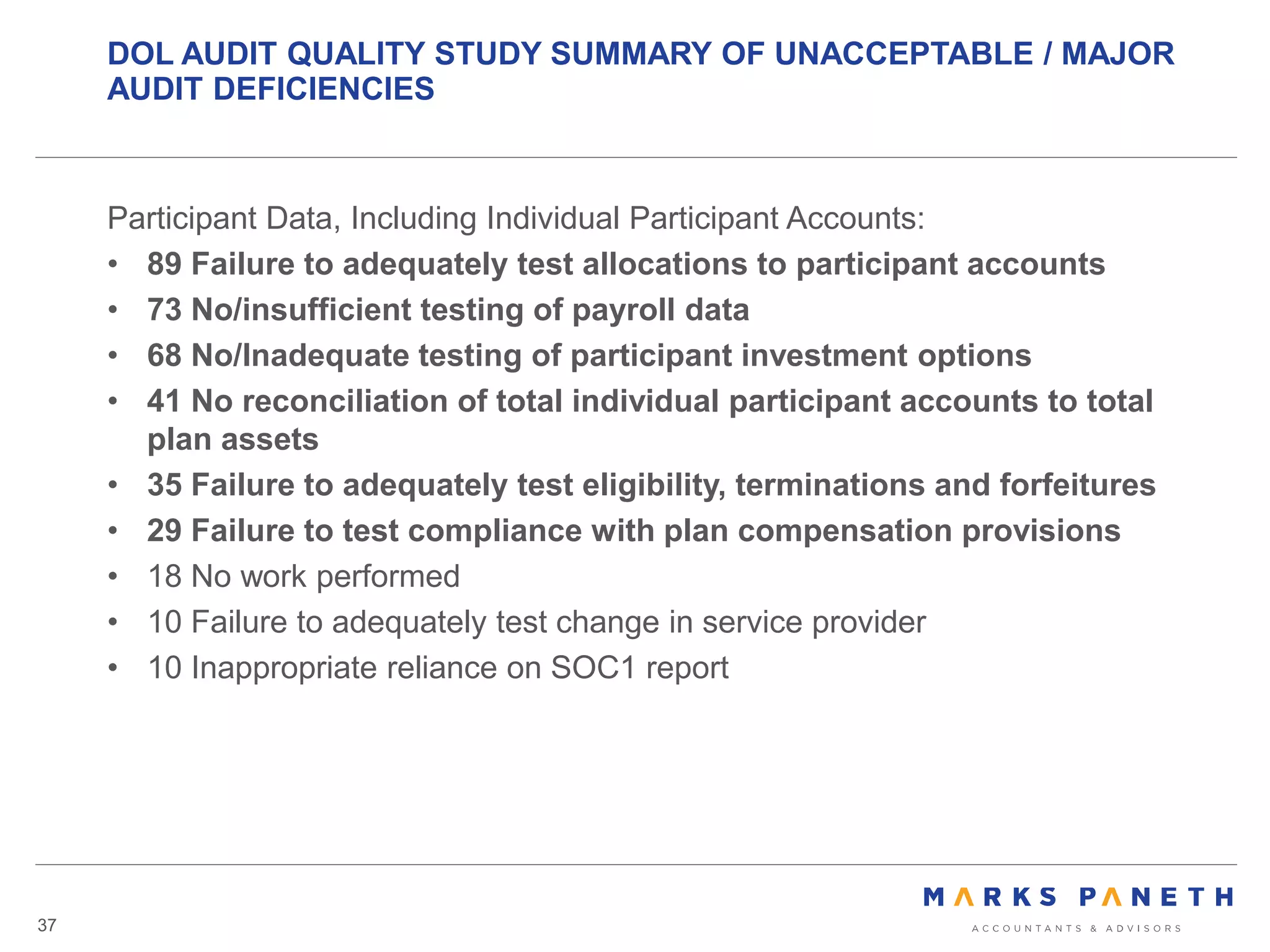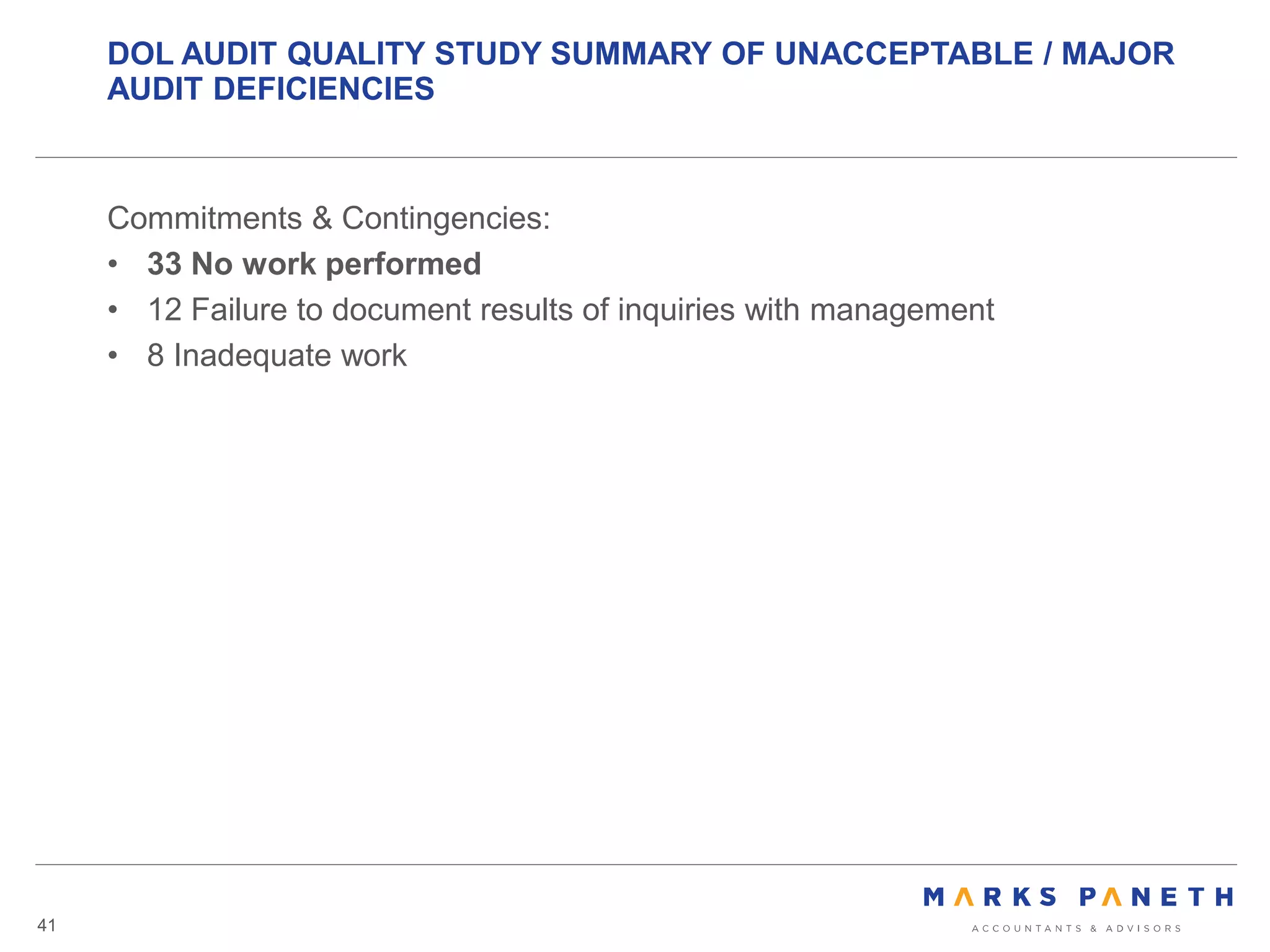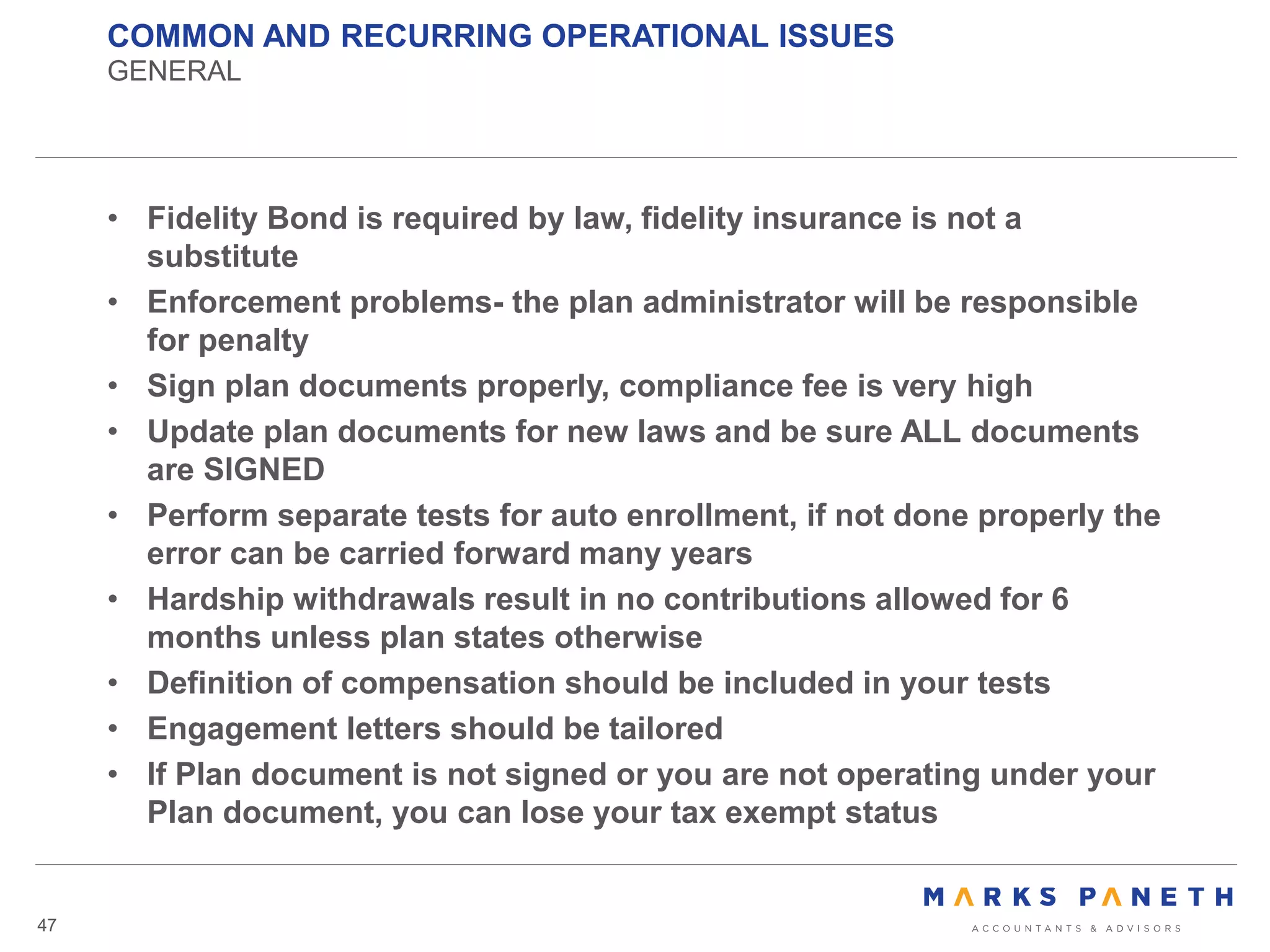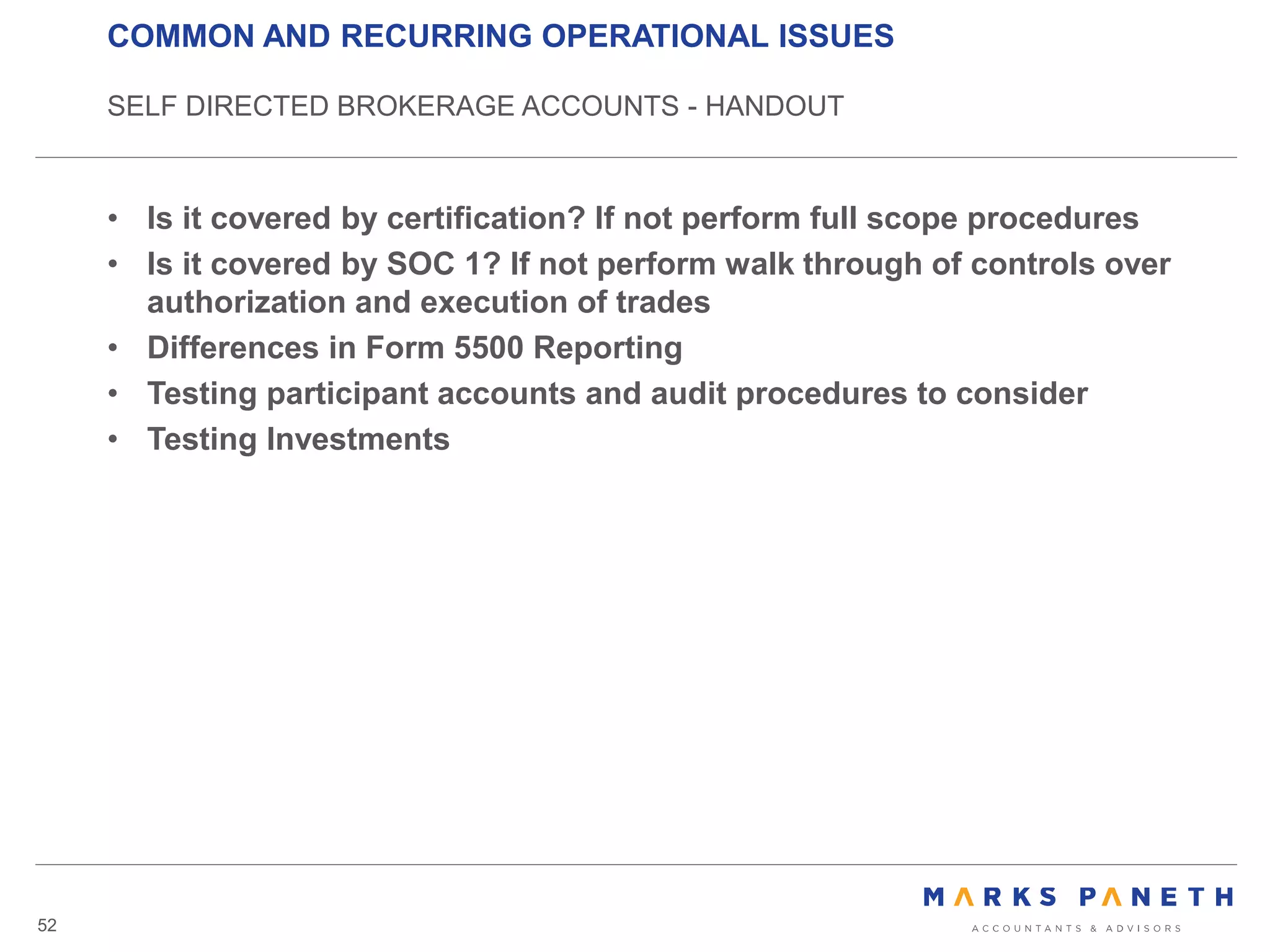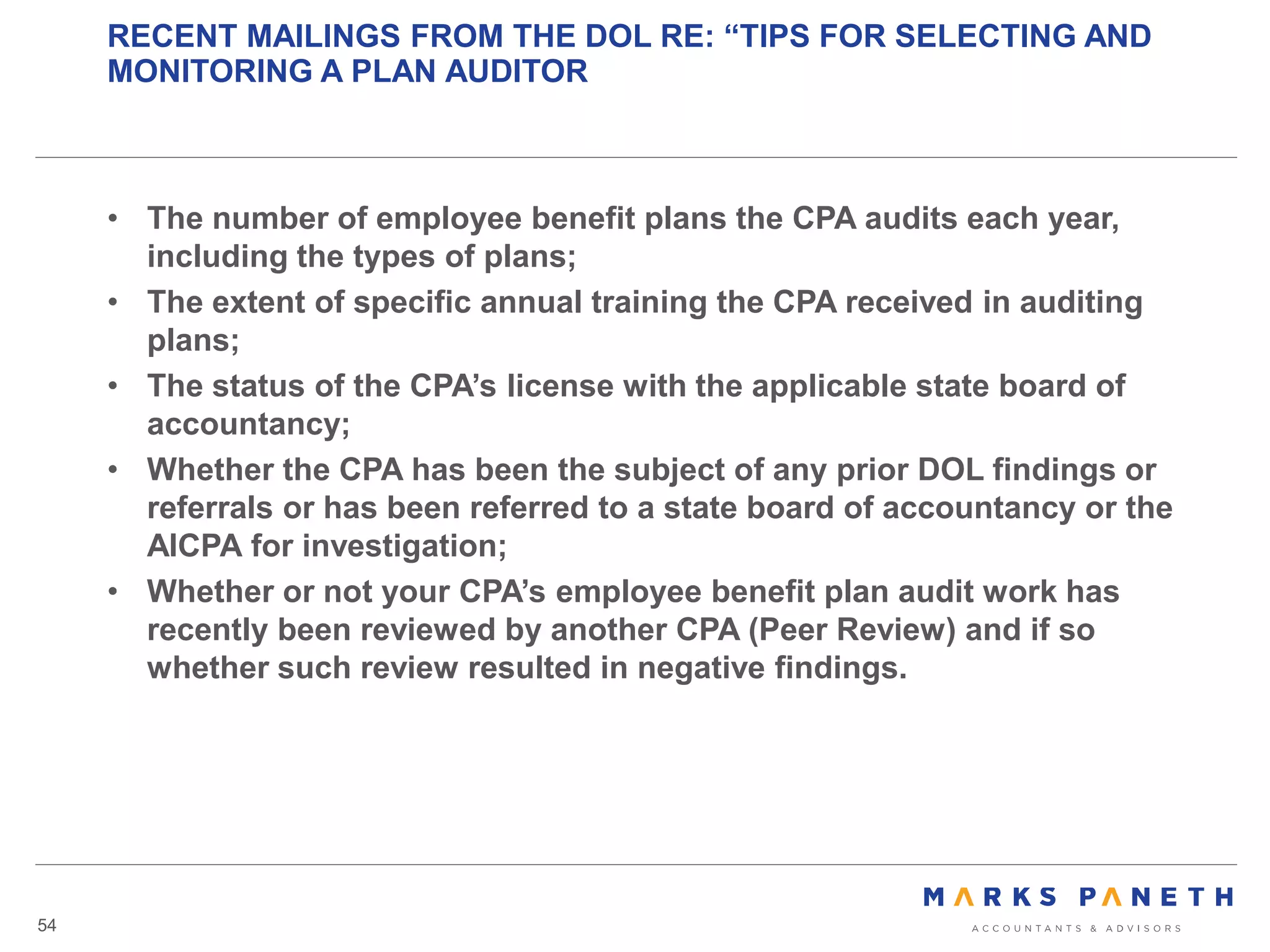This document provides an overview and agenda for improving employee benefit plan audits. It discusses the Department of Labor's assessment of audit quality and common deficiencies found. Plan fiduciaries are responsible for establishing controls over operations like contributions, participant data, investments, benefits and expenses. Fiduciaries should appoint an independent auditor and facilitate the audit process. The document also covers limited scope audits, SOC reports on service organizations, and examples of unmodified auditor opinion reports.


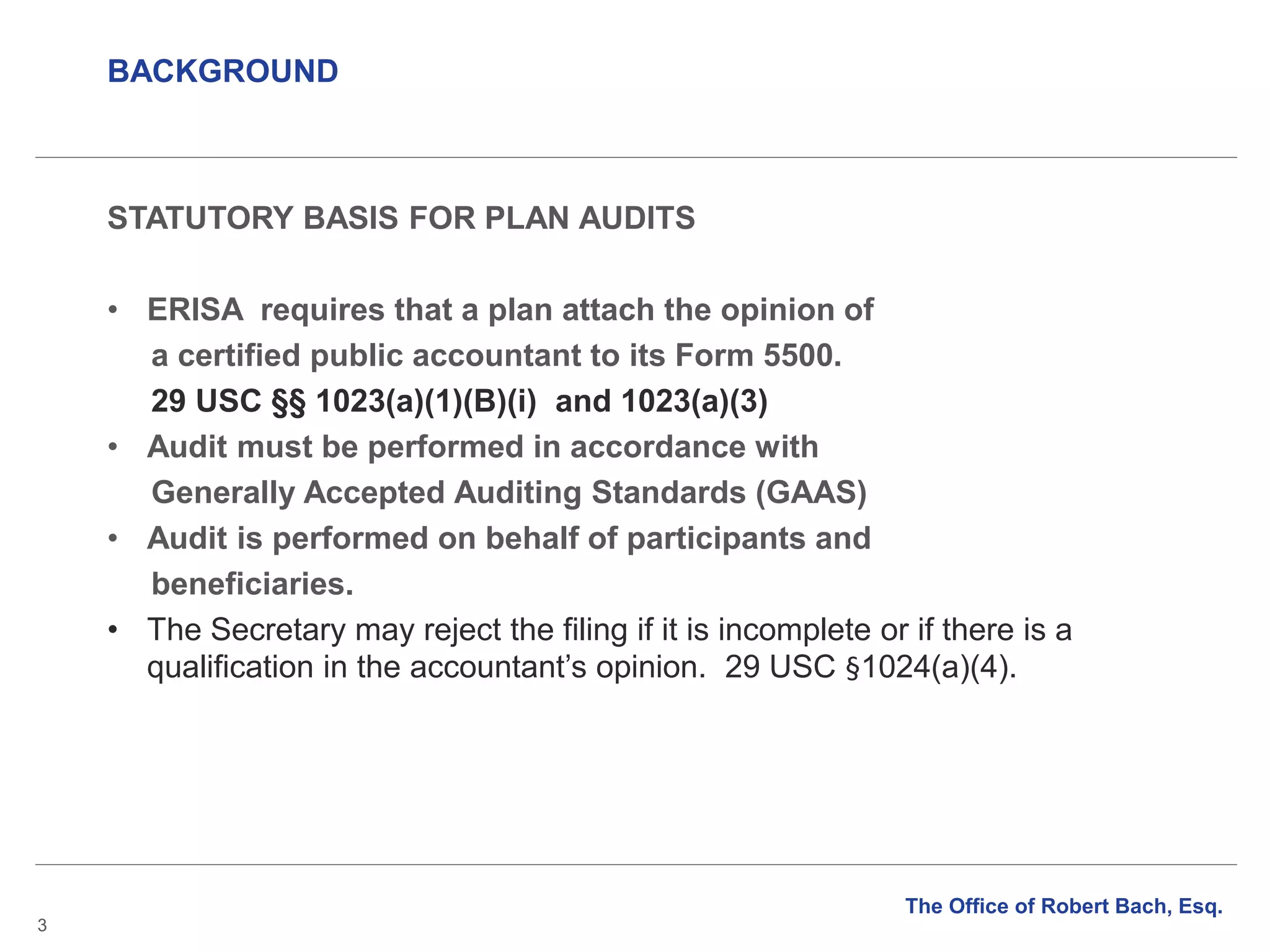






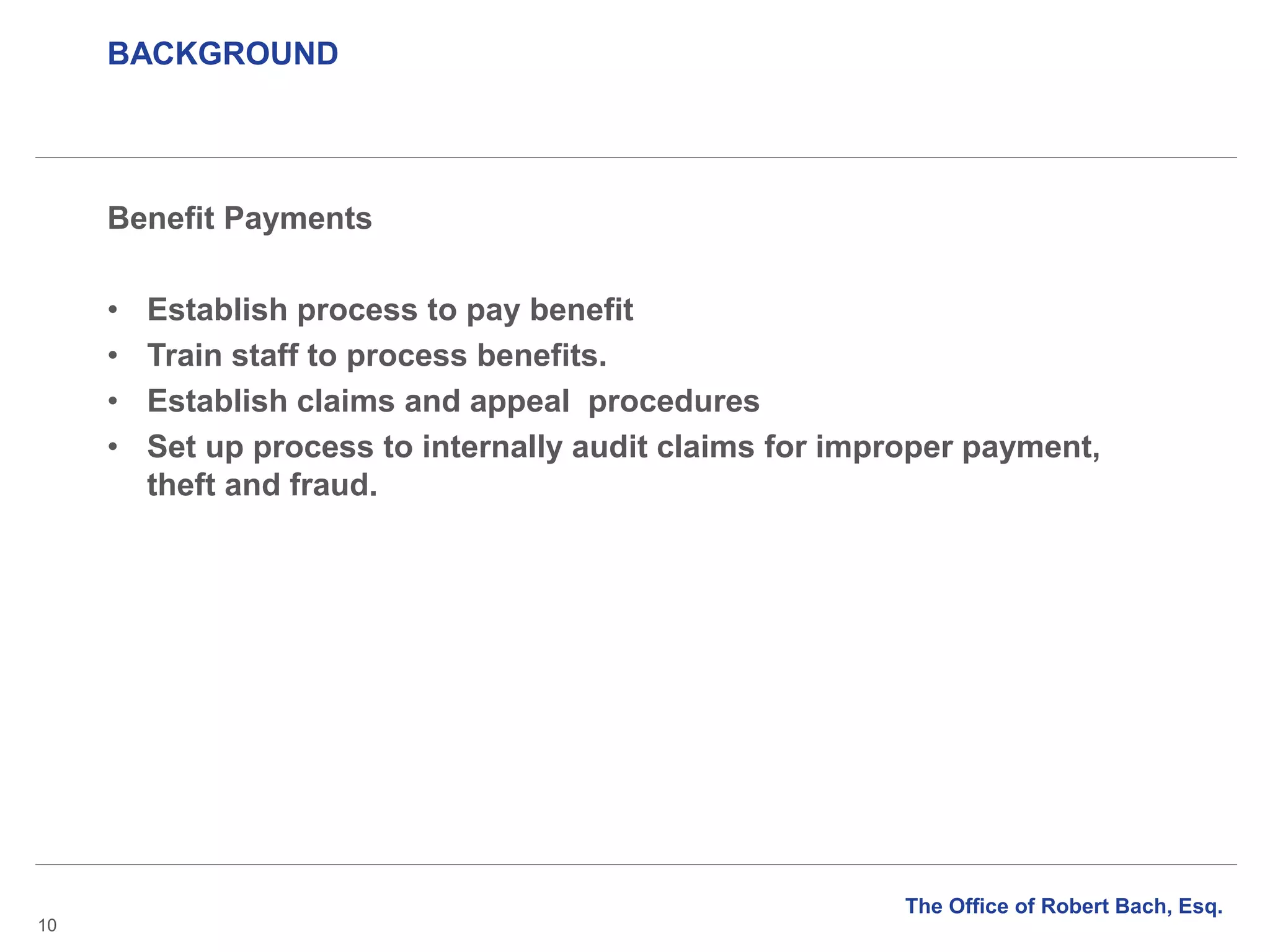

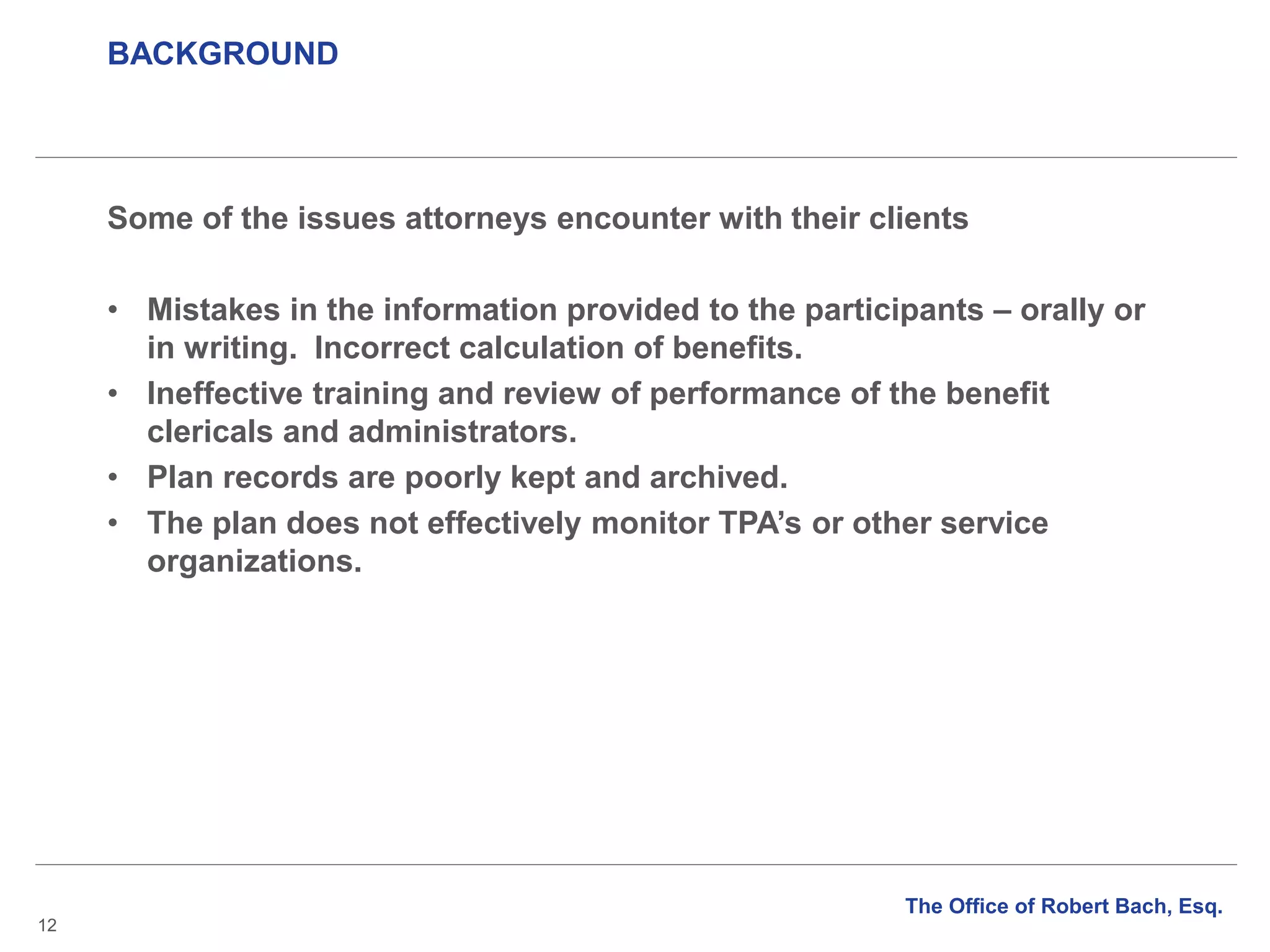

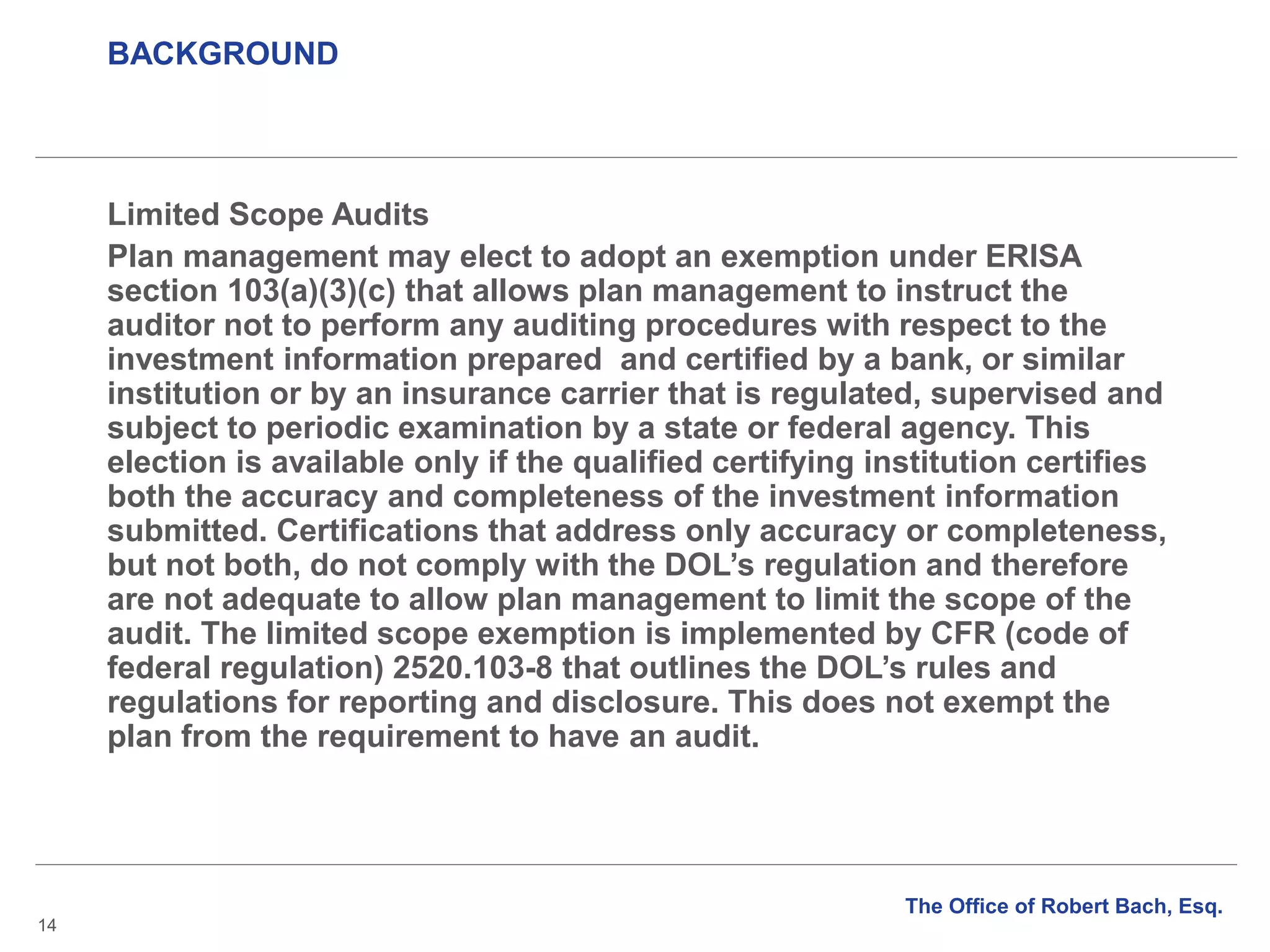


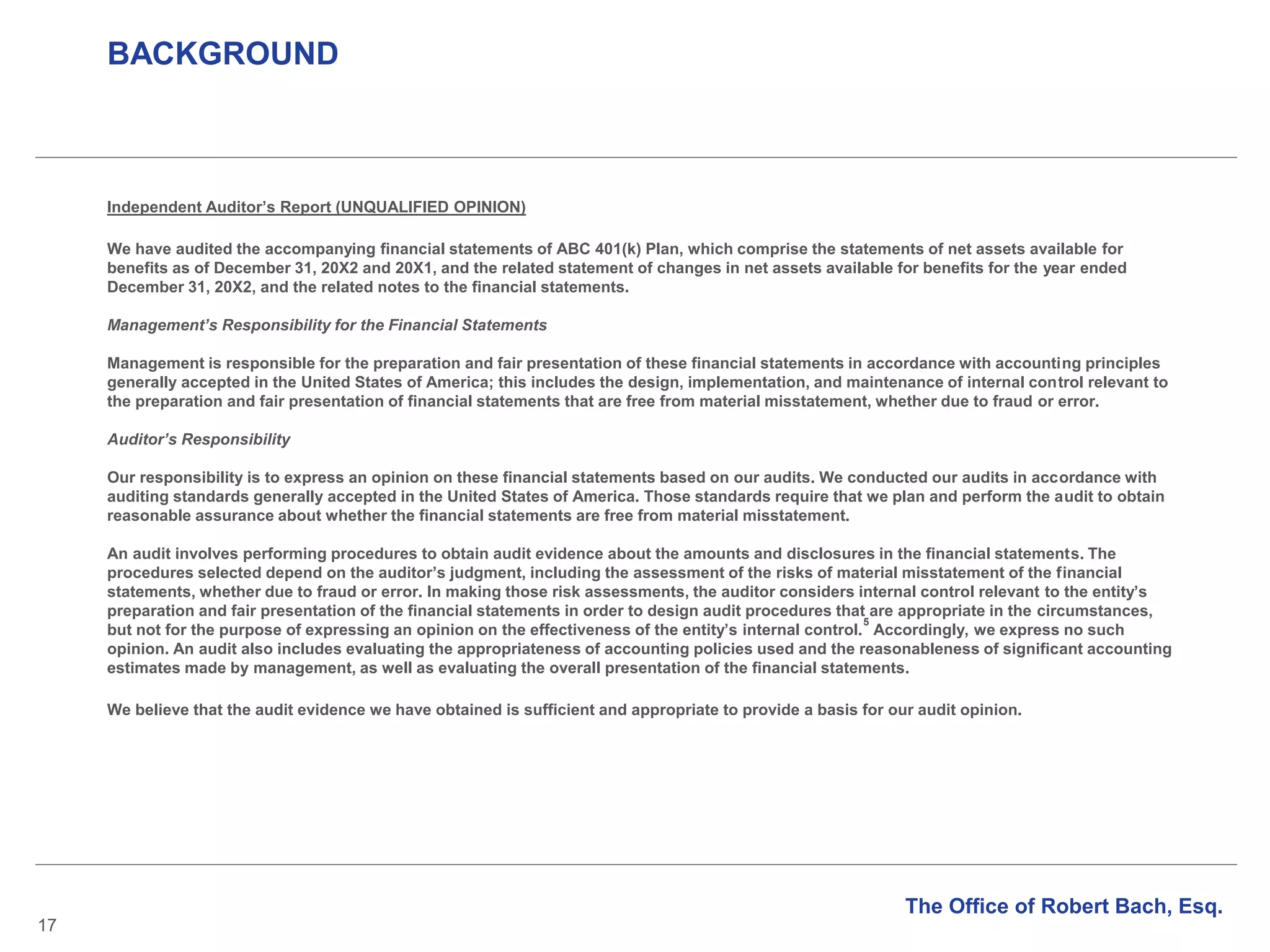
![BACKGROUND
18
Independent Auditor’s Report (UNQUALIFIED OPINION) Continued:
Opinion
In our opinion, the financial statements referred to above present fairly, in all material respects, the net assets available for
benefits of the Plan as of December 31, 20X2 and 20X1, and the changes in net assets available for benefits for the year ended
December 31, 20X2, in accordance with accounting principles generally accepted in the United States of America.
Report on Supplementary Information
6
Our audits were conducted for the purpose of forming an opinion on the financial statements as a whole. The supplemental
schedules of [identify title of schedules and period covered] are presented for the purpose of additional analysis and are not a
required part of the financial statements but are supplementary information required by the Department of Labor’s Rules and
Regulations for Reporting and Disclosure under the Employee Retirement Income Security Act of 1974. Such information is the
responsibility of the Plan’s management and was derived from and relates directly to the underlying accounting and other
records used to prepare the financial statements. The information has been subjected to the auditing procedures applied in the
audits of the financial statements and certain additional procedures, including comparing and reconciling such information
directly to the underlying accounting and other records used to prepare the financial statements or to the financial statements
themselves, and other additional procedures in accordance with auditing standards generally accepted in the United States of
America. In our opinion, the information is fairly stated in all material respects in relation to the financial statements as a whole.
________________
[Auditor’s signature]
[Auditor’s city and state]
[Date of the auditor’s report]
The Office of Robert Bach, Esq.](https://image.slidesharecdn.com/improvingemployeebenefitplanaudits-160201182334/75/Improving-employee-benefit-plan-audits-18-2048.jpg)

![BACKGROUND
20
Independent Auditor’s Report (Limited Scope Audit Report) continued:
Disclaimer of Opinion
Because of the significance of the matter described in the Basis for Disclaimer of Opinion paragraph, we have not been able to
obtain sufficient appropriate audit evidence to provide a basis for an audit opinion. Accordingly, we do not express an opinion
on these financial statements.
Other Matter
The supplemental schedules [identify schedules] as of or for the year ended December 31, 20X2 are required by the Department
of Labor’s (DOL) Rules and Regulations for Reporting and Disclosure under the Employee Retirement Income Security Act of
1974 and are presented for the purpose of additional analysis and are not a required part of the financial statements. Because of
the significance of the matter described in the Basis for Disclaimer of Opinion paragraph, we do not express an opinion on
these supplemental schedules.
Report on Form and Content in Compliance With DOL Rules and Regulations
The form and content of the information included in the financial statements and supplemental schedules, other than that
derived from the information certified by the trustee (or custodian),43 have been audited by us in accordance with auditing
standards generally accepted in the United States of America and, in our opinion, are presented in compliance with the
Department of Labor’s Rules and Regulations for Reporting and Disclosure under the Employee Retirement Income Security
Act of 1974.
The Office of Robert Bach, Esq.](https://image.slidesharecdn.com/improvingemployeebenefitplanaudits-160201182334/75/Improving-employee-benefit-plan-audits-20-2048.jpg)





